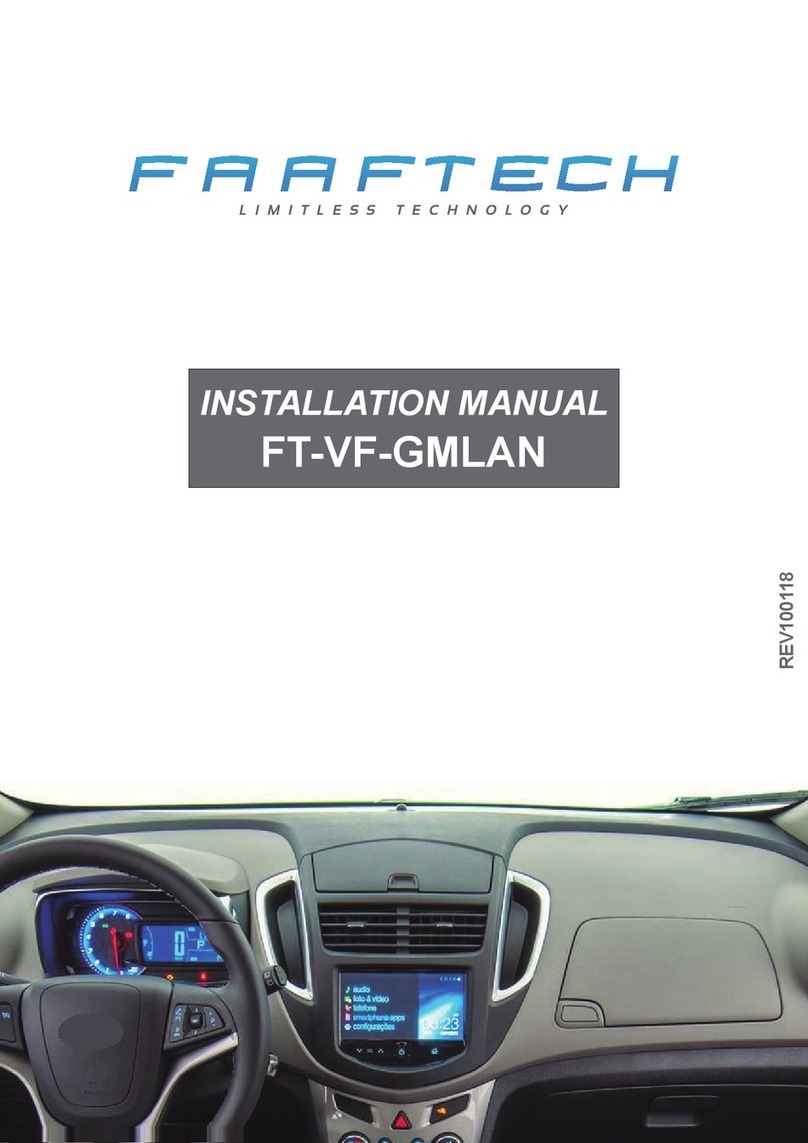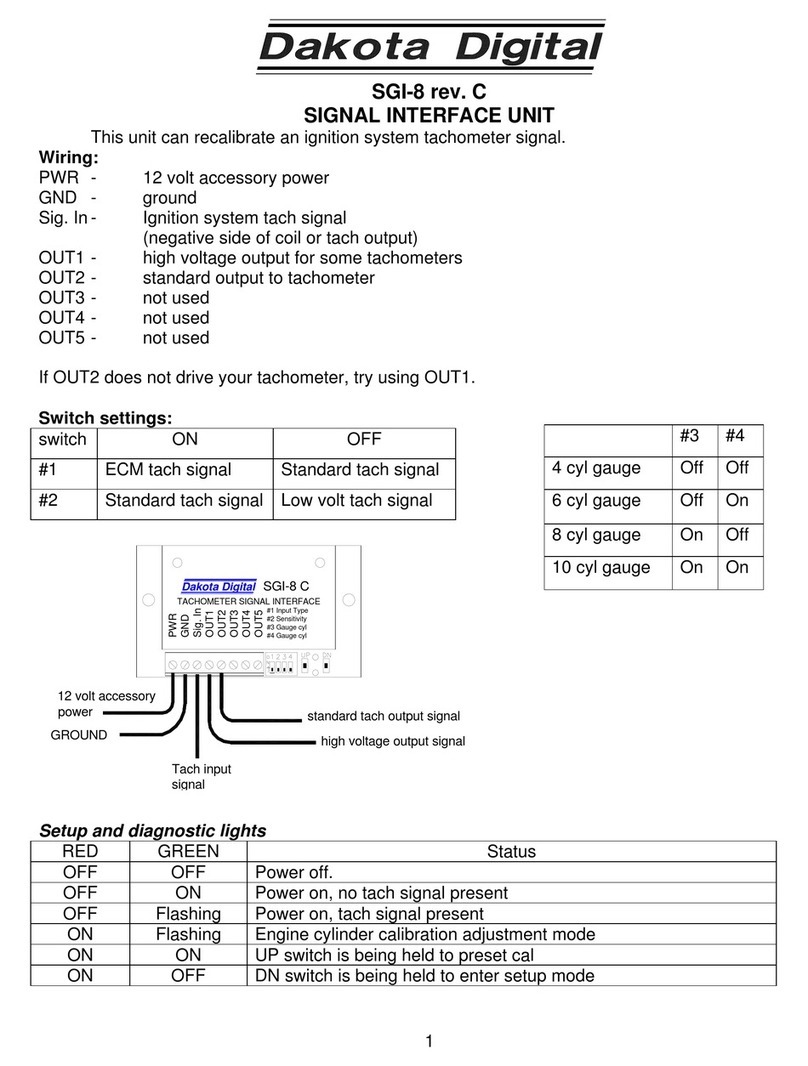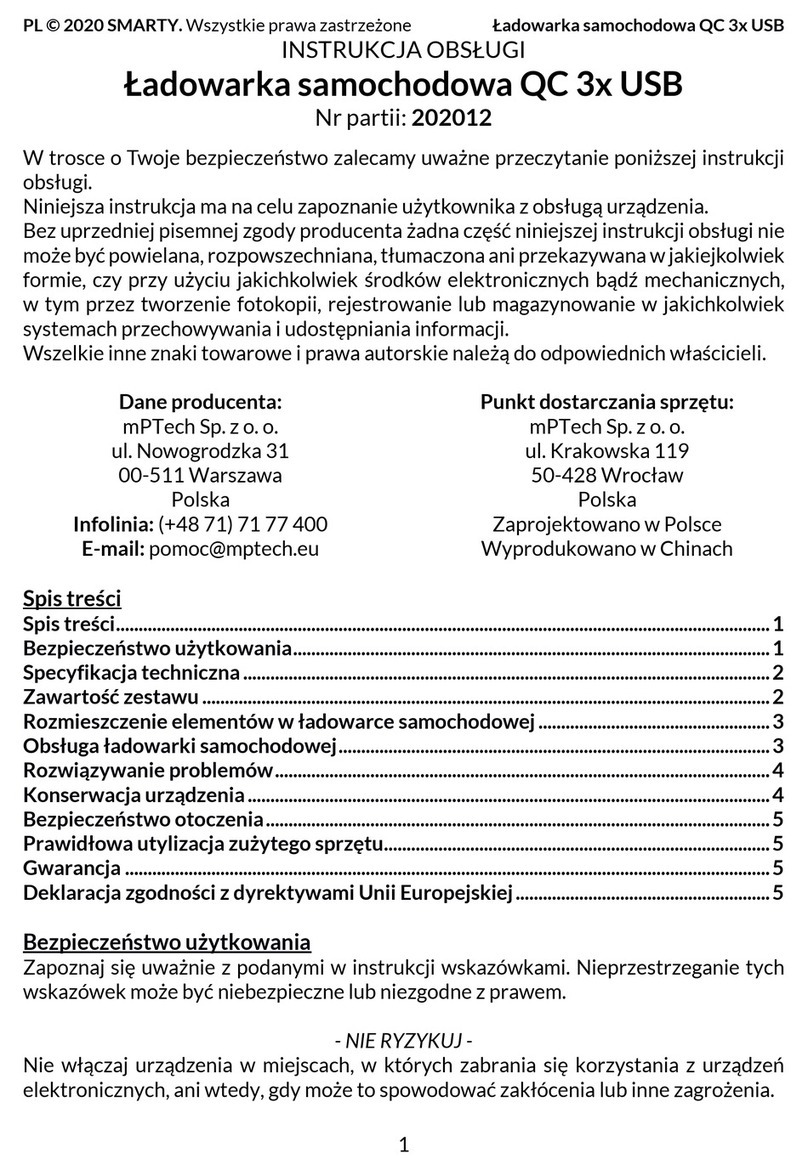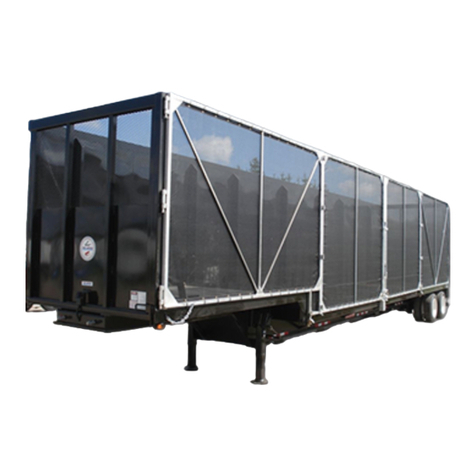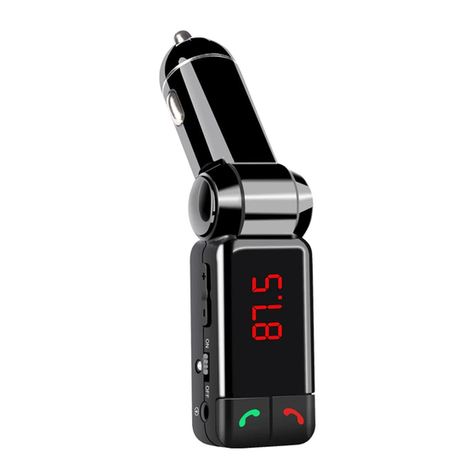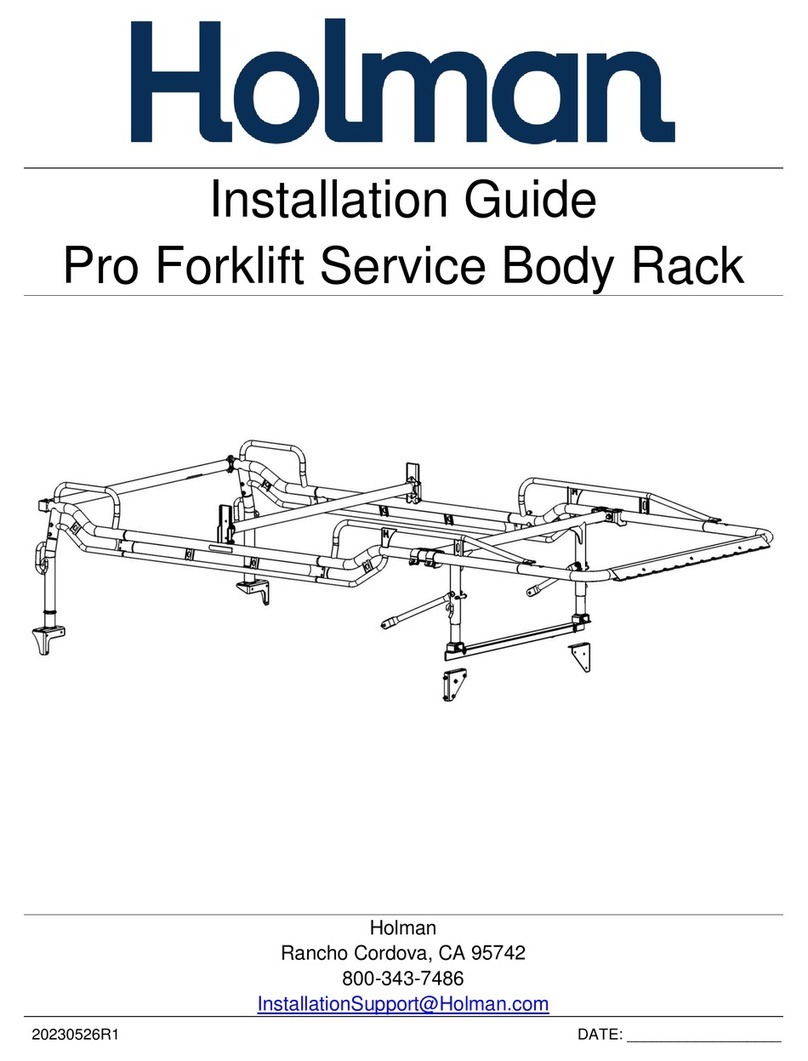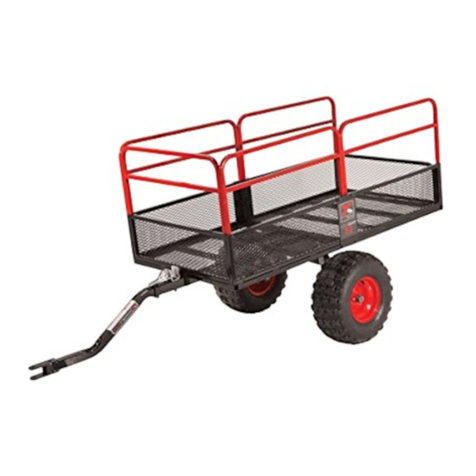ClearSpan NorthStar Garage User manual

©2007 ClearSpan™
All Rights Reserved. Reproduction is prohibited
without permission.
Revision date: August 2007ldg
ClearSpan™
NorthStar Garages
STK# DIMENSIONS
PB01830R4 18' W x 16' H x 24' L
Photo may show a different but similar model.

Visit www.ClearSpan.com for additional products and customer assistance.
CLEARSPAN™POLY BUILDINGS
2
YOU MUST READ THIS DOCUMENT BEFORE YOU
BEGIN TO ASSEMBLE THE SHELTER.
Thank you for purchasing this ClearSpan™ shelter. When
properly assembled and maintained, this product will
provide years of reliable service. These instructions include
helpful hints and important information needed to safely
assemble and properly maintain the shelter. Please read
these instructions before you begin.
If you have any questions during the assembly, contact
Customer Service for assistance.
SAFETY PRECAUTIONS
• Wear eye protection.
• Wear head protection.
• Wear gloves when handling metal tubes.
• Use a portable GFCI (Ground Fault Circuit Interrupter)
when working with power tools and cords.
• Do not climb on the shelter or framing during or after
construction.
• Do not occupy the shelter during high winds,
tornadoes, or hurricanes.
• Provide adequate ventilation if the structure is
enclosed.
• Do not store hazardous materials in the shelter.
• Provide proper ingress and egress to prevent
entrapment.
ANCHORING INSTRUCTIONS
Prior to assembling this shelter, please read the anchoring
precautions and instructions included with the kit.
Anchoring instructions are included in the MUST READ
document. You must anchor the building after the frame is
assembled and before the cover is installed.
WARNING: The anchor assembly is an integral part
of the shelter construction. Improper anchoring may
cause shelter instability and failure of the structure.
Failing to anchor the shelter properly will void the
manufacturer's warranty and may cause serious injury
and damage.
LOCATION
Choosing the proper location is an important step before
you begin to assemble the structure.
The following suggestions and precautions will help you
determine whether your selected location is the best
location.
• Never erect the structure under power lines.
• Identify whether underground cables and pipes are
present before preparing the site or anchoring the
structure.
• Location should be away from structures that could
cause snow to drift on or around the building.
• Do not position the shelter where large loads such as
snow and ice, large tree branches, or other overhead
obstacles could fall.
SITE
After choosing a location, proper preparation of the site is
essential. The following site characteristics will help ensure
the integrity of the structure.
• The support structure must be level to properly and
safely erect and anchor the frame.
• If the site is not level, use footings to provide a secure
base for the structure. Pre-cast concrete blocks,
pressure-treated wood posts, or poured footings are all
acceptable when properly used.
Consult a professional and qualified contractor for
additional information if needed.
• Drainage: Water draining off the structure and from
areas surrounding the site should drain away from the
site to prevent damage to the site, the structure, and
contents of the structure.
WARNING: The individuals assembling this structure
are responsible for designing and furnishing all
temporary bracing, shoring and support needed during
the assembly process. For safety reasons, those who
are not familiar with recognized construction methods
and techniques must seek the help of a qualified
contractor.

3
CLEARSPAN™POLY BUILDINGS
Visit www.ClearSpan.com for additional products and customer assistance.
ASSEMBLY PROCEDURE
Following the instructions as presented will help ensure
the proper assembly of your shelter. Failing to follow these
steps may result in an improperly assembled and anchored
shelter and will void all warranty and protection the owner is
entitled to.
The steps outlining the assembly process are as follows:
1. Verify that all parts are included in the shipment. Notify
Customer Service for questions or concerns.
2. Read these instructions, the Must Read document, and
all additional documentation included with the shipment
before you begin assembling the shelter.
3. Gather the tools, bracing, ladders (and lifts), and
assistants needed to assemble the shelter.
4. Check the weather before you install the roof cover
and any panels (if equipped). Do not install covers or
panels on a windy or stormy day.
5. Re-evaluate the location and site based on the
information and precautions presented in the
documentation included with the shipment.
6. Lay out the site (if this has not been completed).
7. Assemble the frame components in the order they are
presented in these instructions.
8. Assemble the frame including the bracing (if equipped).
9. Consult the Must Read document for anchoring
comments and instructions.
10. Install, tighten, and secure the end panel (if equipped)
and main cover. This applies to fabric covers that
stretch over the frame assembly.
11. Read the care and maintenance information at the end
of these instructions.
12. Complete and return all warranty information as
instructed.
LIST OF WORDS AND PHRASES
Before you begin, it is important to become familiar with the
words and phrases used in this instruction manual.
These words and phrases are common to most
ClearSpan™ shelters and identify the different parts of
the shelter. (Some are used in this document. Others may
not apply to this particular shelter.) These terms describe
the shipped parts and can also be found on the materials
list/spec sheets included with the shipment. To aid in the
assembly, read through the following definitions before you
begin to assemble your shelter.
• Conduit: An assembly of pipes used to secure the
main cover and end panels (if equipped). Purlins and
some strut assemblies also consist of connected pipes
to form a conduit. Each pipe joint of a conduit assembly
is secured with a self-tapping Tek screw.
• Coupler or Fitting: A part of the frame assembly
where legs, purlins and rafter pipes are inserted and
secured. In most instances, 3-way and 4-way couplers
are used. In some larger applications, couplers are
used to secure the joints of the different rafter sections
during the assembly of the rafters. Some shelters do
not use couplers.
• Foot, Rafter Foot , or Base Plate: The part attached
to and found at the base of the rafter or leg of the
shelter. Depending on the shelter, the foot is an
optional purchase. Some shelters do not offer an
optional foot. Some use 1-way connectors; others use
ground posts.
• Must Read Document: This document includes
building and shelter anchoring instructions, steps for
end wall reinforcement, safety precautions, and notices
and warnings. The Must Read document is sent with all
shelters and buildings. If you did not receive a Must
Read document, contact Customer Service to request
one.
• On-Center: Term used to describe a measurement
taken from the vertical center of the rafter or frame
member to the vertical center of another.
• Purlin or Angled (or Lateral) Bracing: The pipe
assemblies that run perpendicular to the rafters
or framework that supports the main cover. These
assemblies are found on the sides and roof areas of
the assembled frame, are evenly spaced, and typically
run from the front to the back of the shelter.
• Plain or Straight Pipe: A term used to describe a pipe
that has the same diameter or width throughout its
entire length.
• Strut: A strut is usually a length of pipe with two
flattened ends and is used for diagonal bracing of the
shelter frame. A strut is typically secured to the frame
work by special brackets, bolts, and/or clamps.
• Swaged End or Swaged Pipe: The term “swaged''
refers to the tapered end of the pipe or tube. Swaged
ends of a pipe can be inserted into couplers and the
straight ends of other pipes of the same diameter.
• Tek Screw: A self-tapping fastener used to secure pipe
joints and to fasten brackets to rafters.

Visit www.ClearSpan.com for additional products and customer assistance.
CLEARSPAN™POLY BUILDINGS
4
REQUIRED TOOLS
The following list identifies the main tools needed to
assemble the shelter. Additional tools and supports may be
needed depending on the structure, location, and
application.
• Tape measure or measuring device
• Fine point marker to mark the location on tubing
• Variable speed drill and impact driver (cordless with
extra batteries works best)
• Wrenches or ratchet and socket set (recommended)
• Scissors or utility knife to cut cover material and strap
• Tool to cut cable to the required length
• Hammers and gloves
• Ladders, work platforms, and other machinery for lifting
designed to work safely at the height of the shelter
• Rope (or straps) for cover installation
UNPACK AND IDENTIFY PARTS
The following steps help ensure that you have all the
necessary parts before you begin.
1. Unpack the contents of the shipment and place where
you can easily inventory the parts. Refer to the Bill of
Materials/Spec Sheets.
2. Verify that all parts listed on the Bill of Materials/Spec
Sheets are present. If anything is missing or you have
questions, consult the Pictorial Parts Guide and all
shelter diagrams throughout these instructions for
clarification, or contact Customer Service.
NOTE: At this time, you do not need to open the plastic
bags containing the fasteners (if used).
QUICK START GUIDE
For a quick overview of this shelter and its components,
consult the Quick Start Guide near the back of these
instructions.
The pages of the Quick Start Guide show exploded views
of all critical connections. Use the diagrams in the Quick
Start section to assemble the building frame.
Consult the remainder of these instructions for important
details that will help during the construction.
SPECIAL NOTE: Baseboards for Frame
These instructions describe installing a baseboard under
the rafter feet (recommended) along each side of the
frame. The baseboard runs from the front to the back of the
frame. It is also used under the base rail of the end walls
(when equipped) to keep the building frame on the same
plane.
This baseboard is not included with the shipment and must
be supplied by the customer. Treated or recycled plastic
lumber works well for a baseboard.
The baseboard, when installed properly, helps prevent
the shelter from sinking into the ground when anchored.
Baseboards also provide a surface to attach rafter feet or
other building components.
Consult these instructions, or contact Customer Service for
additional information regarding baseboards.
Customer-Supplied
Baseboard

5
CLEARSPAN™POLY BUILDINGS
Visit www.ClearSpan.com for additional products and customer assistance.
The following graphics and photos will help you identify
the different parts of the building. Consult the Quick Start
Guide for additional details and diagrams. (All parts are not
shown.)
FA4482B
Tek Screw
QH1061
1" Ratchet
Swaged
Plain
Swaged and Plain Rafter Sections
(not all pieces are shown)
QH1065
2" Ratchet
AS1003
3/16" Cable Clamp
AS1083
3/16" Cable Thimble
103620E (Bulk roll)
Tie Down Strap
104302
2.375" Pipe Fitting w/ Base
104624
Tube Fitting w/Plate
102546
Cross Connector
103856
Band Clamp
104074
Square-to-Round Bracket
103395
Spin Handle
103396
Universal Joint
QH1070
Purlin Strap
CC6212 & CC6216
Fabric Clips
104643
Middle Connector
GW1172 Turnbuckle

Visit www.ClearSpan.com for additional products and customer assistance.
CLEARSPAN™POLY BUILDINGS
6
ClearSpan™
NorthStar Garage
Ground Level
OVERVIEW
This section is an overview of the process for assembling
your shelter. For details of each assembly procedure,
consult the Quick Start Guide and the individual sections
of these instructions. See illustration below to identify main
parts of shelter.
1. Mark the location of the building and identify the
required parts for each assembly procedure.
2. Assemble all rafters.
3. Assemble and anchor the frame.
4. Install all cable assemblies.
5. Install the end wall framing.
6. Prepare and install the
main cover and end
panels.
ATTENTION: Frame shown below may differ from actual
frame. Consult the diagrams in the Quick Start section of these
instructions to view additional details for your frame.
Ratchet locations shown on the frame below may differ from the
actual frame. Consult the Side Profile diagram in the Quick Start
section for ratchet locations details.

7
CLEARSPAN™POLY BUILDINGS
Visit www.ClearSpan.com for additional products and customer assistance.
LAY OUT THE BUILDING SITE
After preparing the site, mark the shelter corner locations
on the site to help square the frame during assembly.
Rafter spacing can also be marked if desired.
Taking these steps before assembling the shelter saves
time and ensures that the structure is positioned as
desired. The following procedure is a suggested method.
Its use depends on the size of the shelter, shelter
application, the footings, and the method used to anchor
the shelter.
SQUARE THE SITE
1. Identify a corner where a building rafter will be
positioned, drive in a stake, and string a line the exact
width of the building and stake in place. (Width of the
rafter is measured from center-to-center of the rafter
legs.)
2. Sting a line at least as long as the building from the first
stake at 90°.
NOTE: A transit can be used to ensure an accurate 90°
angle, or the 3-4-5 rule can be used. Refer to diagram.
Using multiples of 3-4-5 such as 6-8-10 or 12-16-20
helps to maintain an accurate 90° angle.
ASSEMBLE THE BUILDING COMPONENTS
NOTE: Assistance is required to assemble the shelter.
RAFTER ASSEMBLY
Gather the parts:
• Rafter pipe (#2375S148D)
• Rafter pipe (#18RV23S1) & rafter pipe (#18RV23P2)
• Rafter foot base (#104302) & ratchets (#QH1065)
• Tek screws (#FA4482B)
• 3/8" x 3" hex cap (#FAG363B) & 3/8" nut (#FALB04B)
Each rafter assembly consists of four (4) pipes:
2 (#2375S148D), 1 (#18RV23S), and 1 (#18RV23P2).
The #2375S148D pipes include two drilled holes near the
bottom to connect each rafter foot.
Rafter Assembly Procedure
1. Select the four (4) pipes needed to assemble one rafter
and arrange these on a flat surface as shown below for
assembly.
2. Slide the swaged portion of each rafter pipe into the
plain end of the pipe as shown.
3. After squaring the position of the building and placing
a stake at all corners, string a line between the stakes
to mark the base of the building.
NOTE: Paint a line on the ground using the strings
between the stakes as guides if desired to help during
assembly.
4. After marking the outline of the building, continue with
the rafter assembly instructions.
(#18RV23S1)
(#18RV23P2)
(#2375S148D)

Visit www.ClearSpan.com for additional products and customer assistance.
CLEARSPAN™POLY BUILDINGS
8
RAFTER ASSEMBLY (CONTINUED)
3. With the rafter pipes seated at each joint and the rafter
positioned on a flat surface, secure the top, center joint
with a single self-tapping Tek screw. Position Tek screw
approximately 1'' from pipe joint.
ATTENTION: Install the screw so it will not touch
the cover once it is installed. This is typically on the
backside of the rafter, which will be the surface visible
from the inside of the shelter once the frame is
assembled and the rafter is standing.
4. Connect a rafter foot to each leg using one 3/8" x 3"
bolt and one 3/8" nut inserted through the pre-drilled
holes for each connection. See below.
NOTE: Position the bolt heads to the outside of the
rafter and the nuts to the inside of the rafter.
5. Secure the rafter leg joints (Step 3 above) with a Tek
screw and repeat the above steps to assemble two (2)
additional rafters.
6. Set the rafters with the attached rafter feet aside.
7. Assemble all remaining rafters (Steps 1-3 only).
ATTENTION: Do not attach the rafter feet at this time.
Rafter Foot
104302
3/8" Nut
(FALB04B) 3/8" x 3"
Bolt (FAG363B)
Rafter Leg
Rafter Foot Base
3/8" Nut
3/8" x 3"
Bolt
Rafter Leg
Ratchet (QH1065)
8. Attach a ratchet (QH1065) and rafter foot to each leg of
the rafters from the previous step. Secure the ratchet
and foot using the same bolt and nut as shown.
NOTE: Install ratchets immediately across from each
other on the same rafter.
9. Secure the rafter leg pipe joints as described in Step 5.
10. With all rafters assembled, use a felt tip marker to
mark the purlin locations on each rafter. Purlins run the
length of the frame and perpendicular to the rafters.
Their position on the frame is typically at or near the
rafter pipe splices.
11. Continue with the purlin installation and frame
assembly.
End of Pipe
Pipe Joint
6"-12" from the end of pipe
At or just below pipe joint
Centered
Rafter Diagram
Rafter is shown
in the upright or
standing position.

9
CLEARSPAN™POLY BUILDINGS
Visit www.ClearSpan.com for additional products and customer assistance.
FRAME ASSEMBLY
Gather the parts:
• Rafter assemblies
• Purlin Pipes: 131S075 (3) and 131P0735 (1) for each
purlin run. There are five (5) runs for this shelter. All
purlins run on the inside of the frame.
• Cross connectors (#102546) & purlin strap (#QH1070)
Frame Assembly Procedure
After all rafters are constructed (with and without ratchets),
assemble the frame. Forklifts and personnel booms are
recommended for lifting and setting the rafters. Consult
a construction professional if you are not familiar with
construction techniques and assembling similar structures.
ATTENTION: Use the proper lifts. Rafter assemblies are
heavy and awkward to handle. Verify that all rafter pipe
joints are secured with a Tek screw before lifting the rafters.
1. Stand the first end rafter (ratchet attached) and secure
it using rope, cable, or some other form of temporary
bracing to hold the rafter in position. Use a level (or
other leveling device) to plumb the end rafter.
NOTE: Although not shown above, setting the
frame on customer-supplied baseboards is strongly
recommended. See the diagram on Page 4 for details.
Refer to the diagram in the column to the right (Step 5)
to properly position this first end rafter.
2. With the end rafter temporarily secured and plumb,
stand the first interior rafter (no ratchets attached).
NOTE: Refer to the diagrams in the Quick Start section
for the proper rafter spacing for the shelter.
3. Take one (1) 75" swaged pipe (131S075) and connect
it to the end rafter using a QH1070 pipe strap and to
the first interior rafter using a 102546 cross connector.
NOTE: Position the plain end of the purlin pipe at the
end rafter as shown. The purlin pipe will extend no
more than 1/4" beyond the edge of the QH1070 pipe
strap. Center the pipe strap on the underside of the end
rafter as shown and the cross connector at the top of
the interior rafter.
The QH1070 pipe straps are used on the end rafters
only. Cross connectors (#102546) are used on the
interior rafters only.
4. At the peak, measure the on-center rafter spacing to
ensure that it is correct (adjust if needed) and tighten
the clamps to secure the purlin to the rafters. Install a
Tek screw through the pipe strap and into the purlin
pipe at the end rafter.
5. Move to ground level and verify that the on-center width
of each rafter is 18'.
NOTE: To maintain the width, secure the rafter feet to
the site (or customer-supplied baseboards) to prevent
the rafters from shifting. See the example that follows.
Pipe Strap
End Rafter Interior Rafter
Cross Connector
18'
on-center
Purlin Clamp
6. With the center purlin in position at the peak between
the two rafters, install the first sections of the remaining
four (4) purlins. Consult the Quick Start diagrams for
purlin locations if needed.
ATTENTION: For best results, do not fully tighten the
cross connectors until a few rafters are added. Tap
the connectors with a dead-blow hammer to align the
brackets during the assembly process if needed.
Customer-Supplied
Baseboard
Customer-supplied
Lag screws

Visit www.ClearSpan.com for additional products and customer assistance.
CLEARSPAN™POLY BUILDINGS
10
FRAME ASSEMBLY (CONTINUED)
7. Repeat the steps for the remaining rafters and purlins
to complete the frame assembly.
IMPORTANT: Refer to Quick Start Guide to properly
position the rafters with ratchets.
When adding purlin pipe sections, secure each pipe
joint with a single Tek screw.
8. After each cross connector is tighten, secure the cross
connector to the rafter and the purlin pipe to the cross
connector as shown below.
9. After the frame is assembled and the final end rafter is
attached, return to and verify that each connection is
secure. Do not allow the purlins to extend beyond the
outer edge of the end rafter.
NOTE: The purlin positions shown above may vary
slightly from the actual purlin locations for your shelter.
10. With all rafters in place, wrap each connector with
two layers of duct tape to protect the cover when it is
installed.
11. Continue by squaring and anchoring the assembled
frame.
Install Tek
screw here
Install Tek
screw here
Rafter
Purlin
Space below reserved for customer notes.

11
CLEARSPAN™POLY BUILDINGS
Visit www.ClearSpan.com for additional products and customer assistance.
SQUARE THE ASSEMBLED FRAME
Gather the parts:
• Measuring tape and assistant
Complete these steps:
1. Square the frame by measuring diagonally corner-to-
corner and align all rafters as shown below.
2. Verify that the on-center width of each rafter is 18'.
FINISH ROUGH EDGES
Gather the parts:
• Duct tape
• Metal file (may not be needed)
1. Check for sharp edges on the frame. If present, file
these smooth so they will not cut the cover.
2. Apply two layers of heavy duct tape over all pipe
connections and clamps that may contact the cover.
3. Install band clamps for the cabling.
NOTE: The frame is square when the two diagonal
measurements are equal.
3. Check the frame for sharp edges.
ATTACH BAND CLAMPS FOR CABLING
Cables attached to both ends of the shelter provide the
diagonal bracing for the shelter. Band clamps secure the
cable bracing to the shelter.
Six (6) band clamps (#103856) are used on each side of
the frame to secure the cable ends. Consult the diagram
below and in the Quick Start section for cable locations.
Complete these steps to install the band clamps:
1. Remove the nut and bolt from the clamp, carefully bend
the band clamp open, and slide it over rafter in the
proper location.
2. With the clamp in place, use a channel lock pliers to
squeeze the clamp back into shape and reinstall the
bolt and nut. Do not fully tighten at this time.
Band Clamp
Band Clamp Band Clamp
Band Clamp
Side view - Length shown may differ from actual shelter.
Lower Purlin
Band
Clamp
Upper Purlin
Band
Clamp
Band Clamp Location
Frame shown above may be a different length.
Top View
3. Slightly tighten the nut and bolt or use a small piece of
duct tape to hold the clamp in position.
4. Continue by assembling the cables.

Visit www.ClearSpan.com for additional products and customer assistance.
CLEARSPAN™POLY BUILDINGS
12
CABLE ASSEMBLY
Each cable assembly includes the following items:
• Two (2) lengths of cable and one (1) turnbuckle
• Two (2) cable thimbles and four (4) cable clamps
NOTE: In addition to the above parts, each cable assembly also requires two (2) more thimbles and four (4) more cable
clamps to attach the free cable ends to the band clamps attached to the frame. Consult the Cable Diagram on the
following page and the Quick Start diagrams for clarification and cable locations.
Cable Assembly Procedure
1. Using the diagrams in the Quick Start section for your building, determine the point-to-point connection for one cable
assembly and measure the distance on the assembled frame.
2. Add 24" to the dimension determined in Step 1 and cut the cable into two sections in the location where you want to
install the turnbuckle. (Record or remember the lengths of each section so you can adjust these as needed after all
components are attached and the cable assembly is fitted to the frame.)
3. Take one turnbuckle, extend it to its "open" position,
and add a cable thimble to each eyebolt of the
turnbuckle.
NOTE: Wrap approximately 10" to 12" of the cable around the thimble and add the cable clamps. Position the U-bolt
of each clamp on the "dead" end of the cable as shown in the main diagram above. When installed correctly, one
clamp will be near the thimble and the other clamp will be 6"-8" from the first clamp. Tighten clamps to secure the
connection and wrap duct tape around the dead cable end and the live cable prevent damage to the main cover.
5. Repeat the step to attach a thimble to one end of the remaining cable section.
6. Take one cable section and attach the free end to the thimble at one end of the turnbuckle. Wrap the cable around the
thimble and secure as previously described. Repeat this step for the remaining cable section with the thimble.
7. Take the cable assembly and secure it between the first set of band clamps attached to the frame. Slightly tighten the
turnbuckle to determine if the assembly is the correct length to allow for the proper adjustment.
8. Make the necessary length adjustments to the cables to reduce cable waste and repeat the above procedure for all
remaining cable assemblies. Do not completely tighten the cables until all assemblies have been installed and the
frame is anchored. Consult the diagram on the following page for attachment details.
9. Continue by anchoring the frame and tightening the cables. Consult the MUST READ document for anchoring
suggestions.
Thimble
Cable
ATTENTION: ALL CABLE ASSEMBLIES ARE
IDENTICAL REGARDLESS OF FRAME POSITION.
NOTE: Use pliers to spread the ends of the thimble,
place the thimble over the eyebolt, and squeeze the
thimble back into shape.
4. Take one end of one cable section and add a cable
thimble as shown in the diagram to the right.
Thimble
Cable Clamps Turnbuckle
Thimble
Cable: Live End
Cable Clamp
Typical Turnbuckle Assembly
Dead End
Wrap with
duct tape
Wrap with
duct tape
Thimble

13
CLEARSPAN™POLY BUILDINGS
Visit www.ClearSpan.com for additional products and customer assistance.
CABLE PLACEMENT
The diagram and inserts below identify the placement and
proper way to attach the cable assemblies to the building.
All inserts are viewed from inside of the shelter.
Customer-Supplied
Baseboard
ATTENTION: The cable positions are identical for
both sides of the frame. All cable assemblies are
positioned at the ends of the frame regardless of
the frame length. Consult the Quick Start diagram
for your shelter for additional details.
All inserts show the circled locations as seen
standing inside the frame.

Visit www.ClearSpan.com for additional products and customer assistance.
CLEARSPAN™POLY BUILDINGS
14
TIGHTEN THE CABLING
Once all cables are attached and the frame is anchored,
tighten all cable assemblies.
1. Return to the first set of cables and turnbuckles and
align the band clamps with the cable if needed.
2. With the band clamps in the desired position, install a
Tek screw through each band clamp and into the rafter.
3. Tighten the band clamps and then tighten cables.
NOTE: Tighten the cables in each section evenly so
that the frame remains plumb. Do not overtighten.
4. After one set of cables is tightened, move to another
set and repeat the tightening steps.
5. Repeat this process until all cables are tight.
6. Continue with the installation of the main cover.
ANCHOR THE SHELTER
At this point, anchor the frame. Once the frame is anchored
properly, continue with these instructions.
WARNING: Securing the rafter footings to wood boards
set on the site is not a substitute for properly anchoring
the shelter. You must anchor the shelter as described in
the MUST READ document.
FAILING TO PROPERLY ANCHOR THE SHELTER
WILL RESULT IN DAMAGE TO THE SHELTER AND
MAY CAUSE PERSONAL INJURY.
READ THE MUST READ DOCUMENT TO PROPERLY
ANCHOR THE SHELTER.
PREPARE MAIN COVER
Gather the parts:
• Pipe 1.315" x 75" swaged (3)
• Pipe 1.315" x 73.5" plain (1)
• Main cover
• Tek screws
Assembly Procedure
NOTE: When handling the main cover and setting it in
position, do not pull on the end straps. They will pull out of
the cover.
WARNING: To prevent damage to the cover and to
prevent serious personal injury, DO NOT attempt to
install the main cover on windy days.
1. Assemble two main cover conduits. Start each conduit
assembly with one (1) plain pipe and add three (3)
swaged pipes to arrive at the correct length.
a. Locate all sections of pipe needed to assemble
the cover conduit.
b. Insert the swaged end of each pipe into the
plain end of another pipe until the conduit is
assembled.
c. Secure each pipe joint with a Tek screw.
NOTE: Tape Tek screws with duct tape to prevent
damage to main cover.
The cover conduits are inserted into the pockets sealed
into the main cover and are used to tighten and secure
the main cover to the assembled frame.

15
CLEARSPAN™POLY BUILDINGS
Visit www.ClearSpan.com for additional products and customer assistance.
Cover Conduits
Cover
Ends w/
Strapping
2. After assembling the cover conduits, locate the main
cover and unfold it on a clean, smooth surface near the
frame.
NOTE: Unfold the main cover with the inside surface
facing up.
3. Locate the cover ends with strapping and align with the
front and back of the shelter.
4. Insert the cover conduits into the pockets of the main
cover.
PREPARE MAIN COVER (CONTINUED)
ATTACH MAIN COVER
Gather the parts:
• Main cover (with conduits already inserted)
• Ropes long enough to reach over the frame (provided
by customer)
• Box cutter or utility knife
Assembly Procedure
1. To pull the cover over the frame, attach ropes to both
ends of the cover conduit. Wrap the rope around the
conduit a few times to prevent it from slipping off.
2. With the necessary ropes attached to the cover
conduit, lift the conduit and carry the cover toward the
base of the frame.
3. Toss the ropes over the frame and pull the cover into
position. One person is required at each rope.
NOTE: Use lifts and additional assistants (if needed) to
help pull the cover up and over the frame.
4. Once the main cover is pulled into position, center the
cover on the frame.
WARNING: To prevent damage and injury, do not leave
the cover unattended if it has not been secured. The
ropes can be used to temporarily keep the cover from
sliding or blowing off the frame.
5. Tie the ropes (or straps), used to pull the cover into
position, to the frame to help hold the cover.
6. Move to the other side conduit of the cover and
temporarily secure that side of the cover to the frame.
NOTE: Tie ropes to the ends of the side conduit and
directly across from the ropes or straps tied to the other
side conduit to temporarily secure the cover to the
frame.
7. Continue with the installation of the side straps.
Cover
Conduit Ropes
NOTE: Depending on the length of the cover it may
be necessary to attach additional ropes to the cover
conduit between the end ropes by cutting a small
opening in the cover pocket and tying the rope around
the conduit. DO NOT cut through the main cover. Cut
through the conduit pocket only.

Visit www.ClearSpan.com for additional products and customer assistance.
CLEARSPAN™POLY BUILDINGS
16
INSTALL THE MAIN COVER SIDE STRAPS
The side straps wrap around slits created in the side
conduit pocket. The strap ends of each strap are then fed
into each side ratchet attached to the rafter legs and slightly
tightened to keep the cover in position.
Required parts and tools:
• 103620E (1" black strap)
• Tool to cut slits in cover conduit pockets
Complete these steps to install the side straps:
1. Move to one side ratchet attached to a rafter, lift the
cover skirt, and cut a slit in the conduit pocket above
the conduit and in line with the ratchet.
Photos above show using a utility knife to cut a slit
above the conduit, which has been inserted into the
main cover side pocket. Cover, rafter, and frame design
differ from actual shelter. Procedure is the same.
NOTE: If ropes were used at these locations when
the main cover was pulled in place, a slit in the cover
pocket may already be present.
When creating the slit in the pocket for the strap, do not
cut the main cover. Cut only the pocket material.
2. Select the 2" yellow tie down strap that shipped with
the building and insert one end of the strap through the
slit and around the cover conduit.
NOTE: Do not
tighten completely at
this time.
Frame and ratchet
location differ from
actual frame. Steps
to install the main
cover are similar
however.
Some shelters are shipped with a roll of bulk strap. If
this is the case for the shelter, cut a length of strap from
the roll and continue.
3. Feed both ends of the strap through the slot in the
ratchet and slightly tighten the strap.
NOTE: Depending on the where the ratchet was
attached to the rafter, the strap may need to be cut to
the proper length.
4. Repeat the previous steps to install and slightly tighten
the remaining straps.
5. After all side straps are installed and slightly tightened,
install the PVC conduit at each end of the main cover.
NOTE: Do not
tighten completely
at this time.

17
CLEARSPAN™POLY BUILDINGS
Visit www.ClearSpan.com for additional products and customer assistance.
INSTALL THE PVC CONDUIT FOR MAIN COVER ENDS
The PVC conduit is inserted into a pocket at each end of
the main cover. Strapping is then threaded around the
conduit and the end rafters. This strapping is then evenly
tightened to stretch the main cover from end-to-end.
Required parts and tools:
• LJ2842 (3/4" PVC conduit) and 103620E (1" strap)
• Duct tape, Tek screws, and Tek screw driver
• Tool to cut strap, a lift or ladders to reach top of frame,
and assistants to install and tighten strap
Photo shows the stretch pocket and the conduit and
strapping as installed for a similar main cover. View shows
the cover as seen when standing inside the frame looking
up at the end rafter.
Complete these steps to install the conduit and strapping
for the stretch pockets of the main cover.
1. Take the first section of PVC conduit and feed it into the
stretch pocket from the bottom at one end of the cover.
Insert the plain end of the conduit into the pocket so the
next section can be joined to the bell end of the first.
Photo above shows a similar cover and the location of the
stretch pocket. Cover is shown with the underside facing
up, which is the side visible from inside the frame when the
cover is installed.
Photo shows the notched stretch pocket and the
installed PVC conduit at the end of a similar main cover.
Notched Stretch Hem
Pocket
NOTE: Some covers
may not ship with the
pocket material removed
for the installation of the
straps. If slots need to
be created, cut only the
cover pocket; do not cut
the main cover.
Space slot or slit 18" to
24" apart on-center if
these need created.
PVC Conduit
Notched Stretch
Hem Pocket
End of main cover
where bonnet strap
is located.
Sample Main
Cover to show
pocket location.
2. Once the bell end reaches the pocket, take another
section of PVC conduit, insert the plain end into the bell
end of the previous section and secure the joint using a
Tek screw or PVC glue (supplied by customer).
PVC Tubing
Main
Cover
Main
Cover
End
Rafter
Strap
PVC Conduit
Notched
Stretch
Hem
Pocket

Visit www.ClearSpan.com for additional products and customer assistance.
CLEARSPAN™POLY BUILDINGS
18
3. Wrap the Tek screw and joint using duct tape.
4. Repeat the steps and continue to assemble and feed
the PVC conduit into the pocket.
5. Once the PVC conduit is fully assembled, secured at
the joints, and inserted into the pocket, repeat the steps
for the remaining end of the main cover.
6. With both PVC conduits assembled and installed, verify
that the cover is centered on the frame and move to
one end rafter.
7. Cut four (4) sections of the 1" strap from the bulk roll
that are long enough to tie the PVC conduit to the end
rafter in evenly spaced locations.
INSTALL PVC CONDUIT (CONTINUED)
8. Move to the end of the frame opposite the end where
the temporary straps were tied.
9. Take one end of the bulk roll of 1" strapping and weave
it around the end rafter and PVC conduit.
10. Continue to weave the strap around the end rafter and
PVC conduit working up and over the rafter and down
to the other end of the PVC conduit.
NOTE: Keep the strapping snug during this step, but
do not over tighten. Also, maintain a even distance
between the top of the end rafter and the PVC conduit.
Photo shows the installed strapping. Distance between
the conduit in the pocket and the end rafter is even.
11. After weaving the strapping, cut the strap and tie it to
the end rafter to temporarily secure it.
12. Take the remainder of the bulk strap roll, move to the
other end of the frame and repeat the steps to weave
the strap between the PVC conduit and the top of the
end rafter.
NOTE: The temporary straps at this end (Step 7) can
be removed once the main strapping is in place.
13. After the strap is completely installed at this end, cut
the strap to length and tie it to the end rafter.
Dashed lines show the
temporary straps
(Step 7) tied between
the PVC conduit and
the top of the end rafter
to keep the main cover
centered on the frame
during the installation
of the strapping at the
other end of the frame.
End Rafter
PVC conduit in
notched pocket
Photo shows how
to weave strap
around the conduit
inside the main
cover pocket.
Cover shown
differs from actual
cover.

19
CLEARSPAN™POLY BUILDINGS
Visit www.ClearSpan.com for additional products and customer assistance.
INSTALL PVC CONDUIT (CONTINUED)
NOTE: Maintain an even distance between the end
rafter and the PVC conduit as the strap is installed and
tightened.
Also check that the bonnet portion of the main cover
overlaps the end rafters evenly before stretching the
cover.
If the side straps are too tight to stretch the cover from
end-to-end, loosen the straps as needed and continue.
15. Once the strap is tight, cut it to length if needed and tie
it to the other leg of the same end rafter.
16. Return to the other end of the frame and tighten that
strapping if needed to complete the stretching of the
main cover from end-to-end.
17. With the cover properly stretched, continue by
tightening the side ratchets.
14. With the strap tied to the end rafter, tighten the strap.
This strapping will pull against the strapping installed at
the other end of the frame. Do not overtighten.
TIGHTEN THE SIDE RATCHETS
Side ratchets are tightened after the cover is stretched from
end-to-end. Before continuing, verify that the cover is in the
desired position and centered on the frame. (Loosen and
reposition if needed.) Continue with these steps to tighten
the side ratchets.
1. Move to the side ratchets attached to each leg of one
rafter. Begin at an inside rafter near the center of the
frame.
2. With an assistant at one side ratchet and someone at
the other side ratchet on the same rafter, tighten the
ratchets to secure the cover.
Tightening the ratchets at the same time on the same
rafter helps keep the cover centered and results in a
more uniform appearance.
3. Move to another rafter and repeat the steps to tighten
the side ratchets attached to that rafter.
NOTE: If the strap builds up in the ratchet, loosen the
ratchet, remove some of the strap, and retighten.
4. After all side ratchets are tight, fold the bonnet portion
of the main cover back over the top of the cover and
continue by setting the end wall ground posts and
assembling the end wall framing.
Shelter shown above may be a different model and
length. Photo used for illustration purposes only.

Visit www.ClearSpan.com for additional products and customer assistance.
CLEARSPAN™POLY BUILDINGS
20
END WALL INSTALLATION: SETTING GROUND POSTS
Consult the end wall diagrams in the Quick Start section of these instructions before you begin.
NOTE: Door and non-door end walls for this building are framed the same. Non-door end includes a base rail installed
between the vertical frame members; the door end wall does not include this base rail. Consult the diagrams.
Assistants and lifts (or ladders) designed to reach the top of the end rafter are required. Consult a qualified construction
professional if you are not familiar with the construction of similar frame structures.
Install the Ground Posts for the 2" x 2" End Wall Vertical Frame Tubes
The following steps describe one way to set the ground posts for the vertical frame tubes.
1. At ground level, measure between the legs of the end rafter to locate the center of the end wall. Use a plumb line to
identify the center of the overhead rafter and mark that location on the ground as well. (See Quick Start guide.)
NOTE: Marking the center of the end wall allows multiple measurements to be made as needed from that point.
2. Using the dimensions on the End Wall Frame diagrams, locate the positions of the vertical end frame members for the
door. The width of the door (118" on-center) determines the frame dimensions for the door opening.
IMPORTANT: The positions of the vertical frame members for both end walls are the same.
3. Dig a 12" diameter hole at the locations found in previous step to a depth that is below the geographic frost line.
4. Add concrete to the hole. Concrete should remain 1" to 2" below ground level so that it does not interfere with
construction and installation of other end wall components.
5. Determine the required width of the door and insert one 1.75" x 1.75" square tube (104075) approximately 8" into the
concrete. See diagram below.
6. Repeat the step to insert the remaining ground post for the first end wall and verify that the tubes are plumb and the
correct distance apart. Consult the diagrams in the Quick Start section for additional details.
7. As the concrete sets for this set of ground posts, move to the other end of the building and repeat the above steps to
install the remaining set of ground posts. ALLOW CONCRETE TO CURE BEFORE INSTALLING THE END FRAMES.
8. Once both sets of ground posts are installed, continue with the installation of the non-door end wall framing and panel.
Concrete
1.75" x 1.75" square
tube (104075): Half in
the concrete and half
exposed.
Ground Level
Section of the assembled
End Wall Frame.
NOTE: Base rail
(above) is installed
later during the end
frame installation.
Base Rail
Table of contents
Other ClearSpan Automobile Accessories manuals
Popular Automobile Accessories manuals by other brands
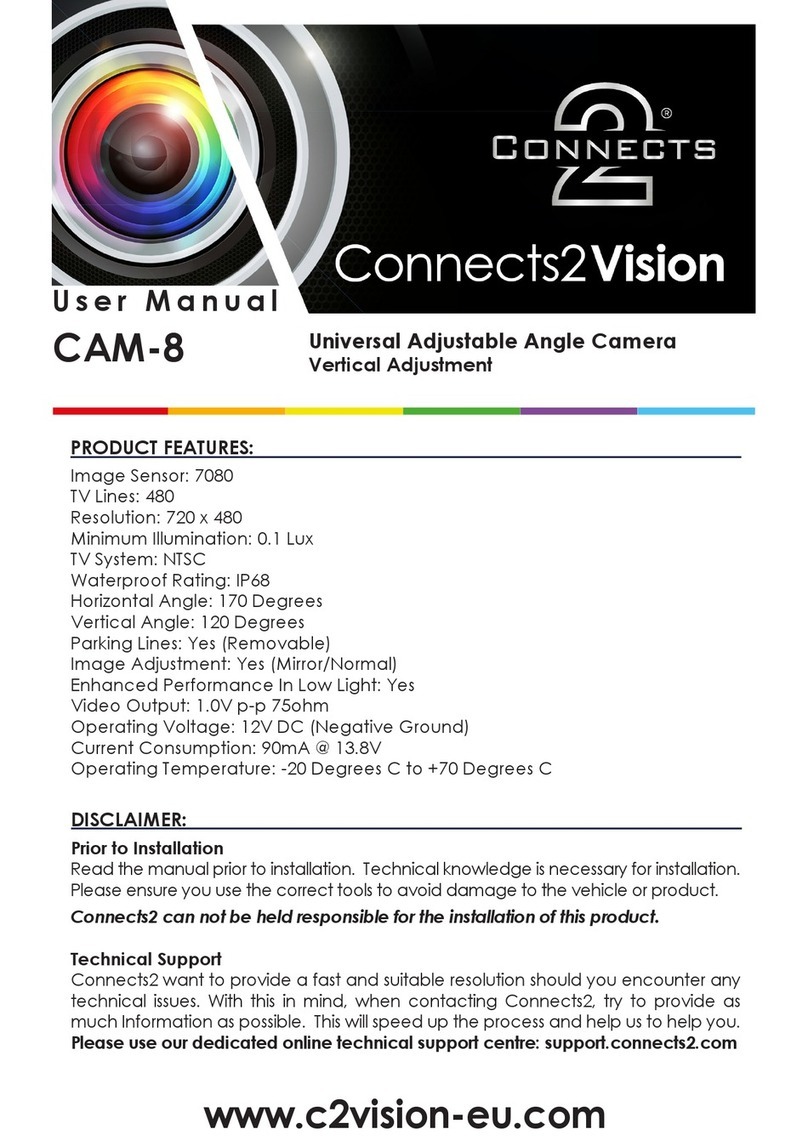
Connects2
Connects2 Connects2Vision CAM-8 user manual
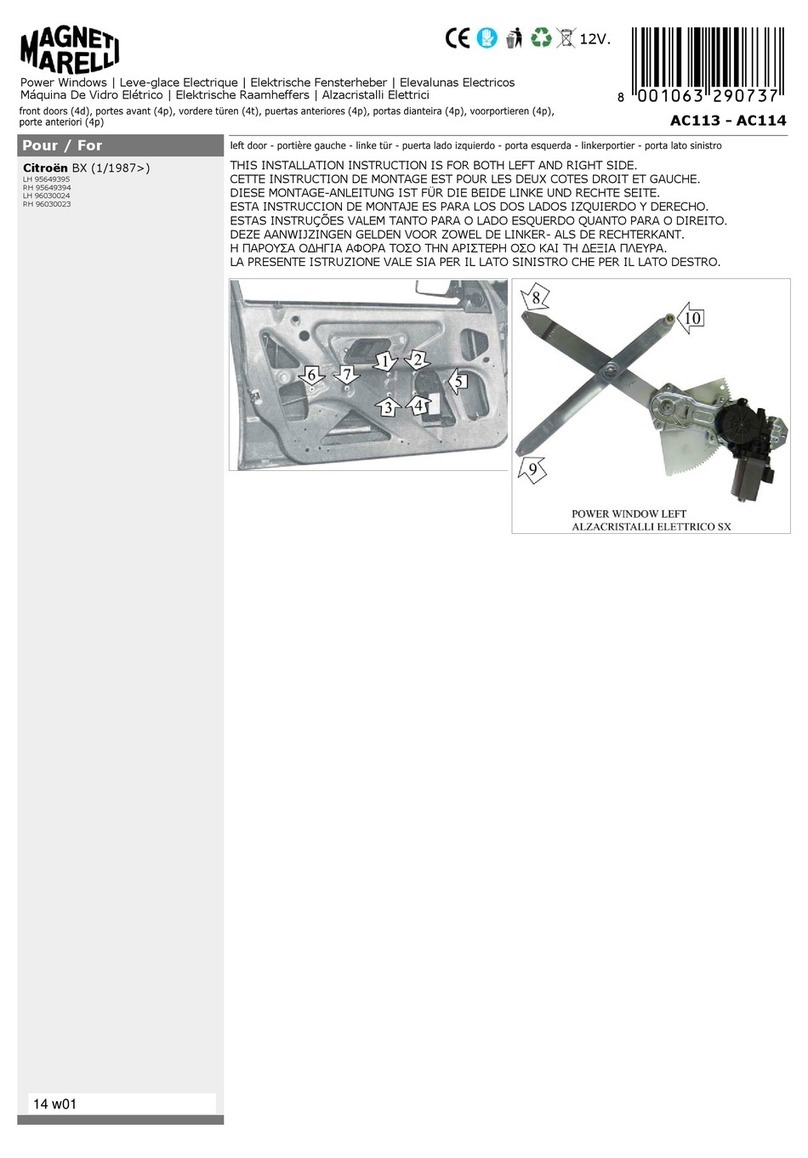
Magneti Marelli
Magneti Marelli AC113 Installation instruction
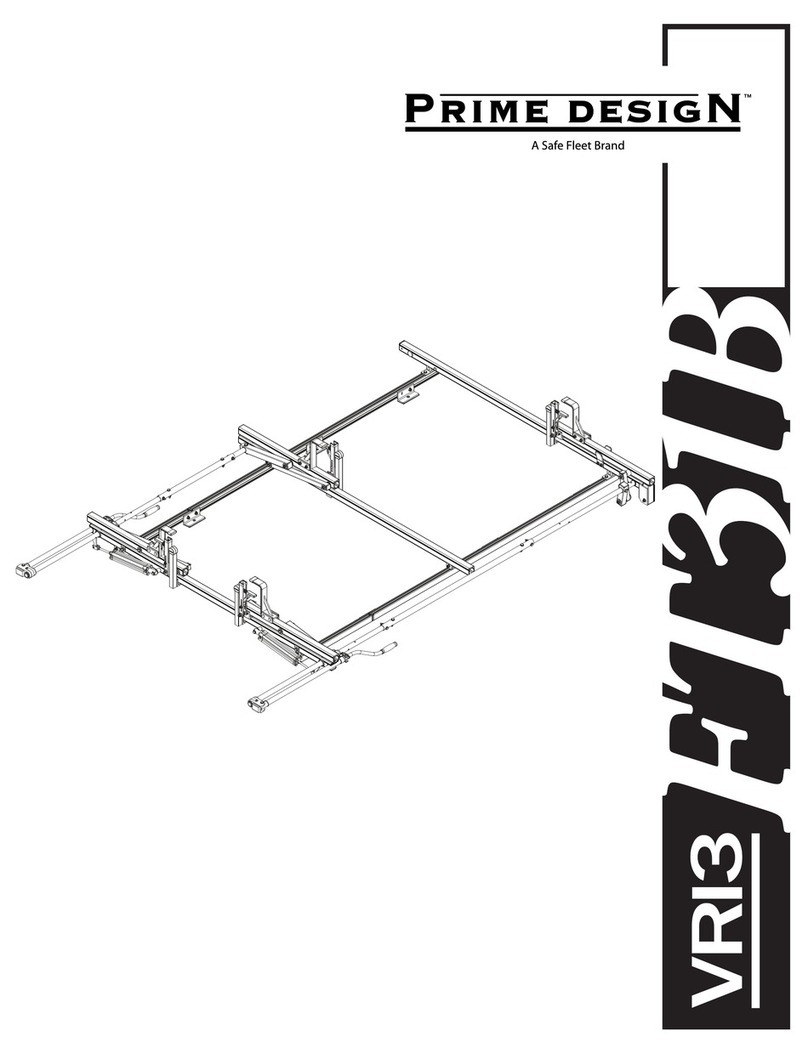
Prime Design
Prime Design VRI3-FT31B Assembly manual
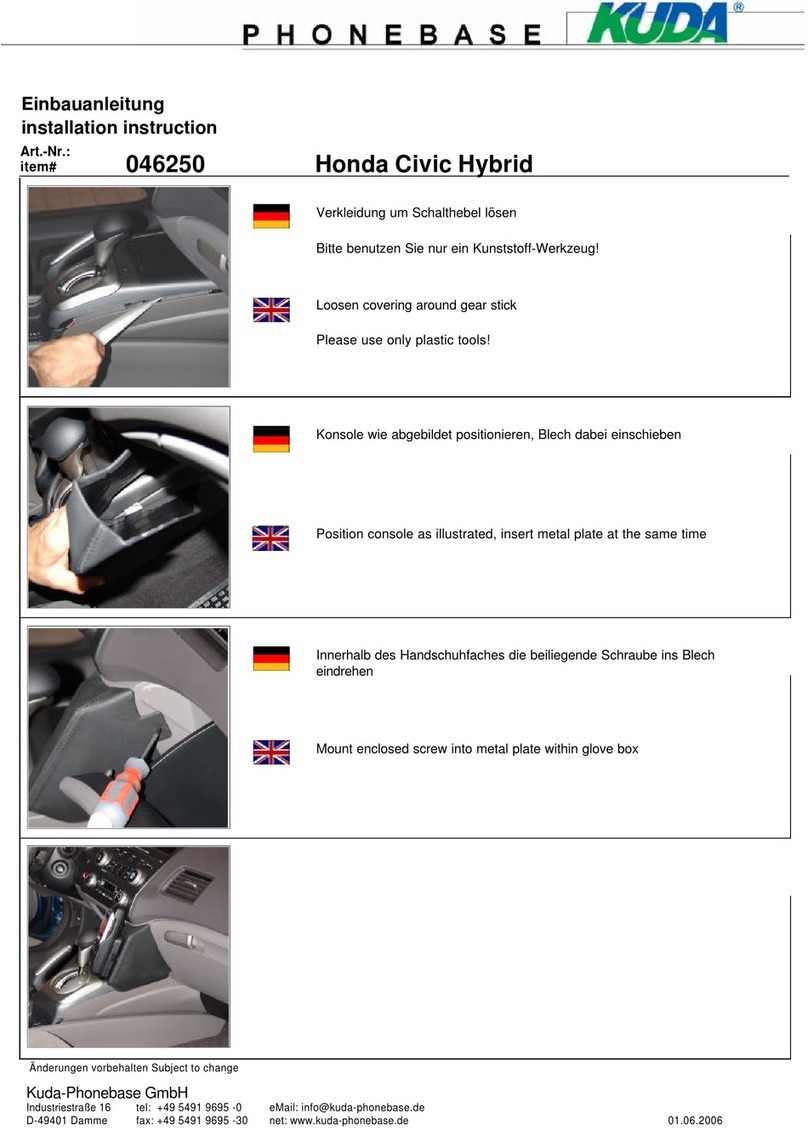
Kuda
Kuda 046250 Installation instruction

Victory 4x4
Victory 4x4 VBR-HR installation instructions

Ecco
Ecco Gemineye EC2014-C installation instructions

